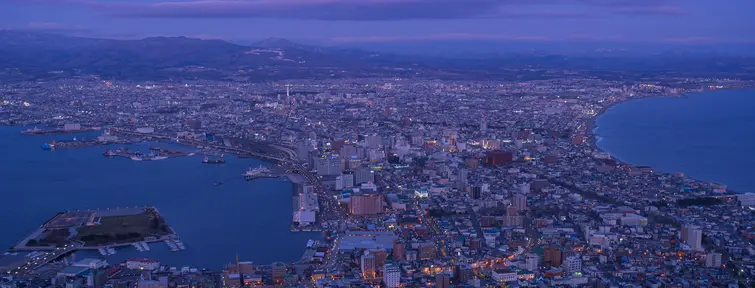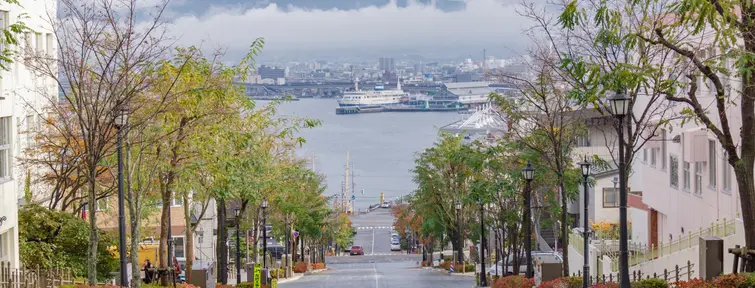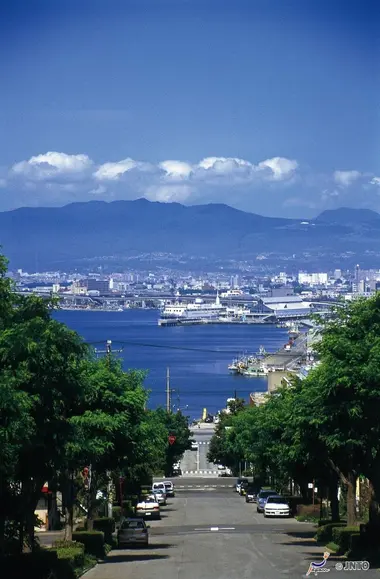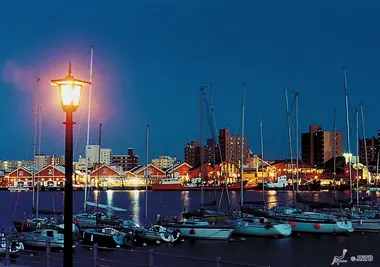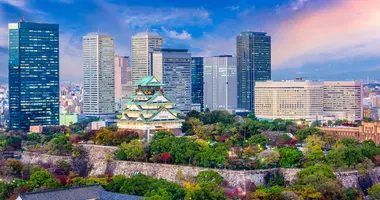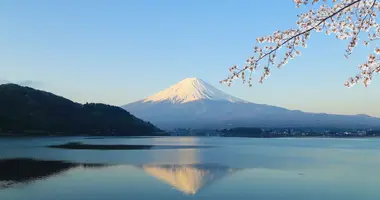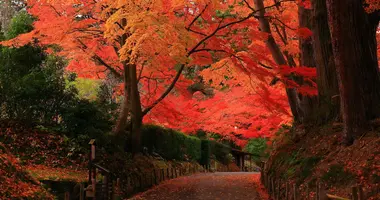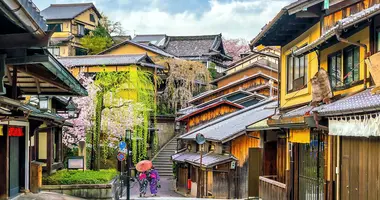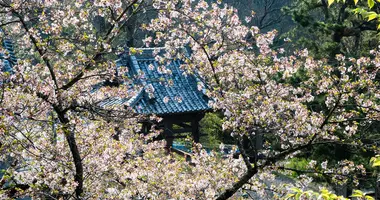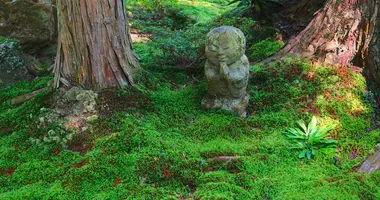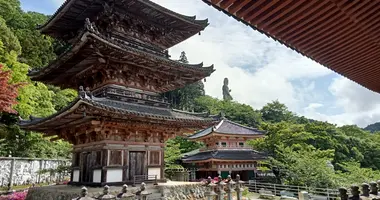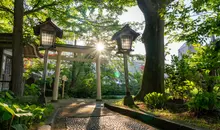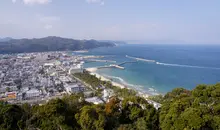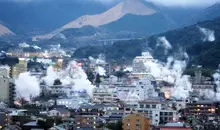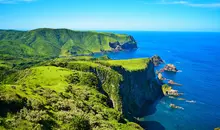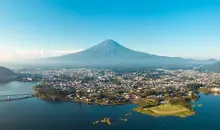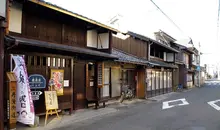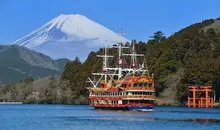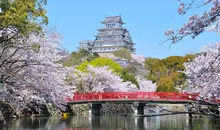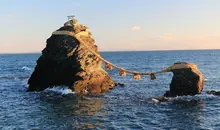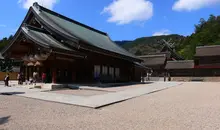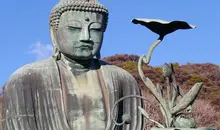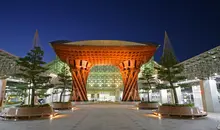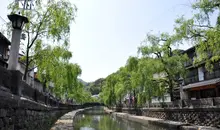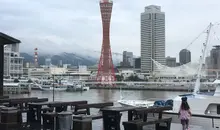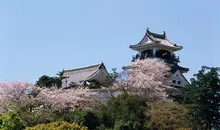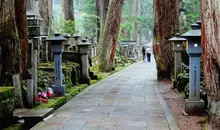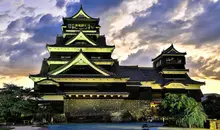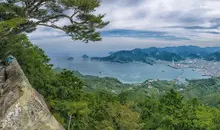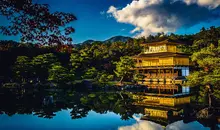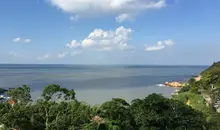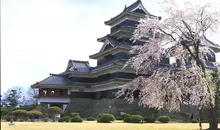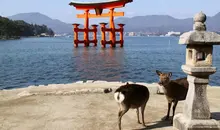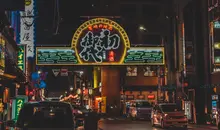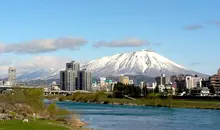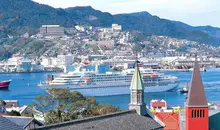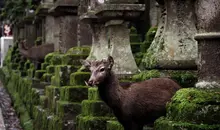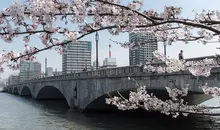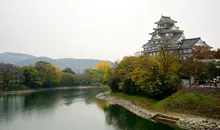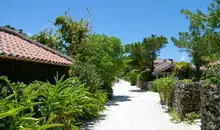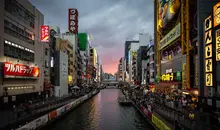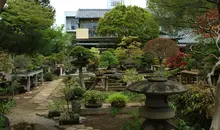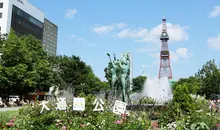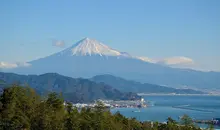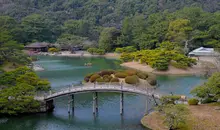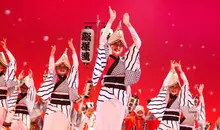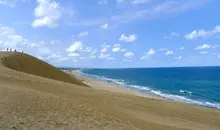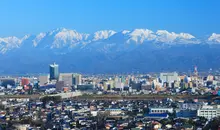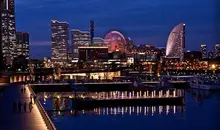Hakodate
- Published on : 17/10/2020
- by : R.A / O.F.
- Youtube
Local Time 16:06
Symbol : cloudy_rainy
Temp : 7.9°C
Date : Friday
Symbol : cloudy_rainy
Temp : 7.5°C
Date : Today
Symbol : cloudy_rainy
Temp : 10.4°C
Date : Tomorrow
Symbol : sunny_cloudy
Temp : -1.4°C
Date : Monday
Local Time 16:06
Symbol : cloudy_rainy
Temp : 7.9°C
Date : Friday
Symbol : cloudy_rainy
Temp : 7.5°C
Date : Today
Symbol : cloudy_rainy
Temp : 10.4°C
Date : Tomorrow
Symbol : sunny_cloudy
Temp : -1.4°C
Date : Monday
Cold but warm
Nestled at the southern tip of Hokkaido, Hakodate is a fascinating port city that harmoniously combines Western influences with Japanese traditions. Hokkaido's third-largest city offers visitors a unique blend of breathtaking panoramas, notably from the famous Mount Hakodate, and a rich historical heritage visible in its preserved districts such as Motomachi. Renowned for its exceptional maritime cuisine, Hakodate delights gourmets with ultra-fresh seafood and local specialties such as shio-ramen. From the red-brick warehouses of the harbor to Western-style fortresses and relaxing hot springs, this picturesque town seduces with its authenticity and diversity.
Getting to and around Hakodate
Getting to Hakodate is relatively easy, thanks to its many connections with the rest of Japan. From Tokyo, you can take the Hokkaido Shinkansen, which runs from Tokyo station to Shin-Hakodate-Hokuto station in around 4 hours. From there, the local Hakodate Liner train takes you to Hakodate station in a further 20 minutes. This option is fully covered by the Japan Rail Pass, making it an economical choice for tourists.
For travelers coming from Sapporo, Limited Express Hokuto and Super Hokuto express trains run regularly, making the journey in around 3 hours and 20 minutes. Flying is a fast alternative , with daily flights from Tokyo's Haneda airport, Kansai (KIX ) in Osaka and Nagoya airport. Hakodate airport is just 8 km from the city center, with regular shuttle buses connecting in 20-30 minutes.
A more scenic option is to take the ferry from Aomori on the main island of Honshu. The Seikan Ferry and Tsugaru Kaikyo Ferry companies offer several daily crossings, with a journey of around 3 hours 40 minutes to 4 hours, offering magnificent views of the Tsugaru Strait.
The streetcar network is the ideal way to get around the city. Hakodate has two main lines (numbered 2 and 5) serving most tourist attractions. One-day (600 yen) and two-day passes are available, making travel both economical and convenient. To get to Mount Hakodate, you can take the cable car from the Jujigai streetcar stop, or opt for the buses from Hakodate station. By car or train, Hakodate's surroundings are also easily accessible for day trips.
Must-sees in Hakodate
Your visit to Hakodate must begin with the famous morning market (Asa-ichi), a veritable local institution. Open from 6 a.m. in winter (5 a.m. in summer), this lively market stretches over several blocks near the station and offers an impressive array of freshly caught seafood. It's a unique sensory experience where you can watch vendors cheerfully call out to passers-by, and even take part in squid fishing at some stalls. The restaurants on site allow you to taste these treasures of the sea straight away, particularly in the form of "donburi", rice bowls generously garnished with seafood.
The historic Motomachi district is another highlight of your visit. Located on the gentle slopes of Mount Hakodate, this district bears witness to the city's early openness to foreign influences. Here you'll discover a remarkable collection of Western-style buildings dating from the Meiji era, including several churches. The Russian Orthodox Church, with its distinctive green dome, is particularly impressive, as are the nearby Catholic and Anglican churches. The Foreigners' Cemetery, where many European expatriates from the early days of the port's opening are buried, offers a fascinating glimpse into this period of cultural exchange.
Kanemori's red-brick warehouses, located alongside the port, are today a lively commercial and cultural complex. Built when Hakodate was a center of international trade, these historic buildings now house craft stores, a variety of restaurants and even a music box "museum". It's the ideal place to buy unique souvenirs or sample Hokkaido's culinary specialties, including Sapporo craft beers available only in the region.
Local gastronomy: from seafood to culinary specialties
Hakodate's gastronomy is dominated by the exceptional freshness of its seafood. Its privileged geographical position, at the junction of warm and cold ocean currents, creates an ideal environment for a wide variety of marine species. Hakodate's morning market is the perfect starting point for discovering this culinary wealth, with stalls brimming with crabs, shellfish, sea urchins and, of course, Hakodate's famous squid, considered some of the best in Japan.
Not-to-be-missed specialties include "kaisendon", bowls of rice topped with a variety of ultra-fresh raw seafood that you can put together to your own taste in several of the market's restaurants. Another particularly refreshing local specialty in summer is "ika-somen", thin strips of fresh squid served like noodles.
Hakodate is also renowned for its uniquely styled ramen. The "shio-ramen" (salt ramen) are particularly famous, with their clear but tasty broth, often enhanced with seafood and especially butter, an influence from the Hokkaido region renowned for its dairy products.
Be sure to sample Hokkaido's culinary specialties such as curry soup, dairy products (including ice cream made with creamy Hokkaido milk) and local pastries. A local hamburger chain, Lucky Pierrot, also offers a unique culinary experience with its 17 extravagantly decorated establishments and original recipes such as the Hakodate curry burger.
Breathtaking panoramas: Mount Hakodate and Goryokaku Tower
Mount Hakodate is undoubtedly one of Japan's most spectacular vistas, ranked among the country's top three night sights. Rising to 334 meters, this mountain overlooks the city and offers a fascinating landscape: Hakodate's isthmus-like configuration creates a silhouette reminiscent of an hourglass illuminated at night, with the ocean on either side. To enjoy this spectacle, the cable car is the most popular option, with a journey time of just 3 minutes from the station near the Jujigai streetcar stop.
The ideal time for this visit is 30 minutes after sunset, during the so-called "blue hour", when the sky takes on a deep midnight-blue hue that magnifies the city lights. Be sure to arrive early, however, as this site attracts many visitors, particularly during the peak tourist season. The observatory at the top has a restaurant and café where you can extend this unique visual experience.
The Goryokaku tower offers another remarkable view of the city, in particular of the star-shaped fortress below. This 107-metre-high observation tower allows you to fully appreciate the fort's unique pentagonal shape, inspired by European fortifications. Inside the tower are fascinating historical exhibits on the history of the fortress and its role in the events that marked the end of the Edo era and the beginning of the Meiji era.
From the top of the tower, you can admire Goryokaku Park and its 1,660 cherry trees, which create a breathtaking spectacle in spring. The view is particularly impressive during the sakura season, usually from late April to early May, when the fort's starry shape is highlighted by a crown of pink blossoms. In autumn, the blazing foliage also provides a striking contrast to the fortifications.
Historical and cultural heritage: Motomachi and Fort Goryokaku
The Motomachi district is the historic heart of Hakodate, and bears witness to the city's pioneering role in opening up Japan to Western influences. Developed in the 19th century after Hakodate became one of the first ports open to foreigners in 1859, this preserved district offers a fascinating walk through history. The sloping streets, including the famous Hachiman-zaka, are lined with Western-style houses and religious buildings that reflect the cultural diversity that has flourished here.
TheRussian Orthodox Church, founded in 1859 to accompany the Russian Consulate, stands out for its distinctive architecture with its onion-shaped dome. Nearby, the Roman Catholic Church and Saint John's Anglican Church complete this surprisingly diverse religious landscape for a Japanese city. The old town hall, with its balcony overlooking the bay, and the former British consulate, where you can enjoy a traditional cup of tea, are also well worth a visit.
Goryokaku, a pentagonal Western-style fort, is another of Hakodate's historic gems. Built between 1857 and 1864 by the Tokugawa shogunate, it was the first European-style fortress in Japan, inspired in particular by the citadel of Lille in France. Its five-pointed star shape was designed to minimize blind spots and optimize defensive positions against artillery.
The site is of major historical importance as the scene of the final battle of the Boshin War in 1869, which marked the end of the shogunate's resistance to imperial forces and the beginning of the Meiji Restoration. Now transformed into a public park, Goryokaku is particularly popular in spring when its many cherry trees blossom, creating a striking contrast with the historic fortifications.
The Hakodate Goryokaku Matsuri, held on the third weekend in May, commemorates these historic events with costumed participants recreating scenes from the 1868 battle. It's a unique opportunity to see history come to life in this authentic setting.

Goryokaku, a pentagonal fort in the Western style
y.Shimizu/© JNTO
Excursions and nature around Hakodate: Mount Esan, Onuma Park and hot springs
The area around Hakodate is full of natural treasures that are well worth a day trip. Just 20 kilometers north of the city lies the quasi-national Onuma Park, famous for its magnificent mountain lakes dominated by Mount Komagatake, an imposing volcano. The park offers a picturesque landscape of lakes dotted with islets linked by small bridges, all framed by lush vegetation. Rent a car to explore Hakodate's surroundings and take full advantage of this exceptional natural setting.
Easily accessible by train from Hakodate (approx. 30 minutes), Onuma Park is ideal for light hiking, cycling or even canoeing on its tranquil lakes. The well-maintained trails allow you to explore the area at your own pace, with plenty of views of Mount Komagatake. In winter, the park is transformed into a white paradise, offering enchanting landscapes beneath the snow.
East of Hakodate, Mount Esan is an active volcano worth a visit for its fields of alpine flowers and spectacular views. Particularly remarkable in early summer when azaleas transform its slopes into a scarlet carpet, this natural site is accessible by bus from Hakodate (approx. 2-hour journey). Hikers will appreciate the paths leading to the summit, offering breathtaking views of the Pacific Ocean.
Hakodate and the surrounding area are also renowned for their onsen (hot springs). The Yunokawa spa, about 30 minutes by streetcar from the city center, is one of the oldest in Hokkaido, with a history stretching back thousands of years. Let yourself be tempted by one of Hokkaido's finest onsen to relax after your explorations. For a truly unique experience, don't miss the Mizunashi Kaihin hot spring, located by the sea and accessible only at low tide.
The Abbey of Our Lady of the Angels, a Trappist monastery located to the northeast of the city, offers an interesting cultural excursion. Although access is limited to the forecourt, chapel and gift store, it's a great opportunity to buy Trappist butter, jam and artisanal cookies at very reasonable prices.
When to visit Hakodate: seasons and recommended length of stay
Hakodate experiences marked climatic variations between the seasons, which has a considerable influence on the travel experience. This port city enjoys a humid continental climate, with cold, snowy winters and relatively mild summers compared to the rest of Japan.
Summer, from June to September, is generally considered the best time to visit Hakodate. Temperatures are pleasant, fluctuating between 15°C and 25°C, allowing you to enjoy outdoor activities in comfort. Summer also offers plenty of light and longer days for exploring the city and its surroundings. This is the peak tourist season, so be sure to book your accommodation in advance.
Spring (April-May) can be a wonderful time, especially in late April when cherry blossoms are in bloom in Goryokaku Park. Temperatures remain cool (5-15°C), so bring warm clothing.
Autumn (October-November) is also charming, with its flamboyant colors and mild temperatures in October that gradually cool down.
Winter (December to March) in Hakodate is cold, with heavy snowfalls. Temperatures regularly drop below zero, sometimes reaching -5°C in January and February. However, this season offers magnificent snow-covered landscapes and the chance to see the illuminated Mount Hakodate reflected in the snow. The Hakodate Festival in early February, with its spectacular fireworks displays, is a highlight for winter visitors.
To make the most of Hakodate and its main attractions, plan at least two full days. This will allow you to visit essential sites such as Mount Hakodate, the morning market, the Motomachi district and Fort Goryokaku. If you'd like to include excursions in the surrounding area, such as Onuma Park or Mount Esan, or simply take time to savor the local cuisine, consider extending your stay to three or four days.
Hakodate is also an excellent base from which to explore the wider island of Hokkaido. From here, you can easily travel to Sapporo, Nagoya, Sendai, Aomori or Morioka for a more complete itinerary through northern Japan. A stay in Hakodate can be perfectly integrated into a broader tour that includes Tokyo and other major Japanese destinations.
Our tours in Hakodate
Interested by Hakodate
Discover other cities to explore
